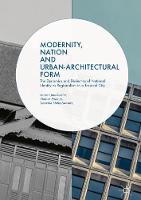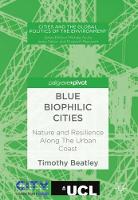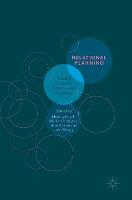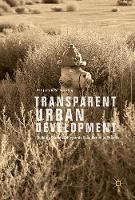Urban Mobility in Modern China
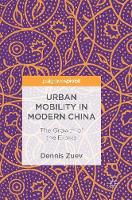 -15%
portes grátis
-15%
portes grátis
Urban Mobility in Modern China
The Growth of the E-bike
Zuev, Dennis
Springer International Publishing AG
05/2018
126
Dura
Inglês
9783319765891
15 a 20 dias
454
1. The Booming low-tech. The chapter provides a brief literature review on the development of electric two-wheeler mobility in Chinese cities. The main goal is to problematize the "low-tech" element in e-mobility innovation in China and show that current everyday life in urban China is highly dependent on e-bike mobility. E-bike is not only a part of everyday life, it is as an indigenous frugal innovation in China. And it is an example of Chinese successful commercialization of low-tech innovation. Why are e-bikes stigmatized in China? 4000 words
2. The Politics of e-bike Mobility in China. The chapter aims to examine the power dynamics behind governing electric two-wheeler mobility in major Chinese cities (bans, control, relationships between diferente road-users, stigmatization of e-bike as na urban monster and stigmatization of users as uncivilized (low-quality people). 2 photos with visual analysis. 6000 words.
3. Everyday Practices: riding, charging and dodging. The chapter uses empirical data from the interviews and ethnographic fieldwork to reflect on the social practices of e-bike users: in particular those of the informal e-bike ride providers in big cities. In particular, the focus is on e-bike related infrastructure spaces (for charging), riding practices (on-road behaviour), charging practices. 3 photos with detailed visual analysis incorporated in the chapter. 4000 words.
4. Everyday Politics: governance and control. This chapter will focus on family use of e-bike (gender Dynamics and hybrid use of car and e-bike). 3 photos. 4000 words.
5. Civilizing Monsters. The chapter will sum up the data analysis to enforce the theoretical argument, that e-bike everyday use is a part of mobility politics in China that until now has largely been overlooked. E-bikes are becoming smarter, fancier and a part of urban landscape in Asia. Ebike is a fancy object for consumption and this fact will be discussed by using a case-study of Niu e-scooters. 3000 words.
6. Conclusion. E-bikes and sustainable mobility futures in China. This chapter will examine potential future scenarios of e-bike development in China visavis other vehicles (low-speed EVs, traditional electric vehicles, bikes and motorbikes. 3000 words.
1. The Booming low-tech. The chapter provides a brief literature review on the development of electric two-wheeler mobility in Chinese cities. The main goal is to problematize the "low-tech" element in e-mobility innovation in China and show that current everyday life in urban China is highly dependent on e-bike mobility. E-bike is not only a part of everyday life, it is as an indigenous frugal innovation in China. And it is an example of Chinese successful commercialization of low-tech innovation. Why are e-bikes stigmatized in China? 4000 words
2. The Politics of e-bike Mobility in China. The chapter aims to examine the power dynamics behind governing electric two-wheeler mobility in major Chinese cities (bans, control, relationships between diferente road-users, stigmatization of e-bike as na urban monster and stigmatization of users as uncivilized (low-quality people). 2 photos with visual analysis. 6000 words.
3. Everyday Practices: riding, charging and dodging. The chapter uses empirical data from the interviews and ethnographic fieldwork to reflect on the social practices of e-bike users: in particular those of the informal e-bike ride providers in big cities. In particular, the focus is on e-bike related infrastructure spaces (for charging), riding practices (on-road behaviour), charging practices. 3 photos with detailed visual analysis incorporated in the chapter. 4000 words.
4. Everyday Politics: governance and control. This chapter will focus on family use of e-bike (gender Dynamics and hybrid use of car and e-bike). 3 photos. 4000 words.
5. Civilizing Monsters. The chapter will sum up the data analysis to enforce the theoretical argument, that e-bike everyday use is a part of mobility politics in China that until now has largely been overlooked. E-bikes are becoming smarter, fancier and a part of urban landscape in Asia. Ebike is a fancy object for consumption and this fact will be discussed by using a case-study of Niu e-scooters. 3000 words.
6. Conclusion. E-bikes and sustainable mobility futures in China. This chapter will examine potential future scenarios of e-bike development in China visavis other vehicles (low-speed EVs, traditional electric vehicles, bikes and motorbikes. 3000 words.









